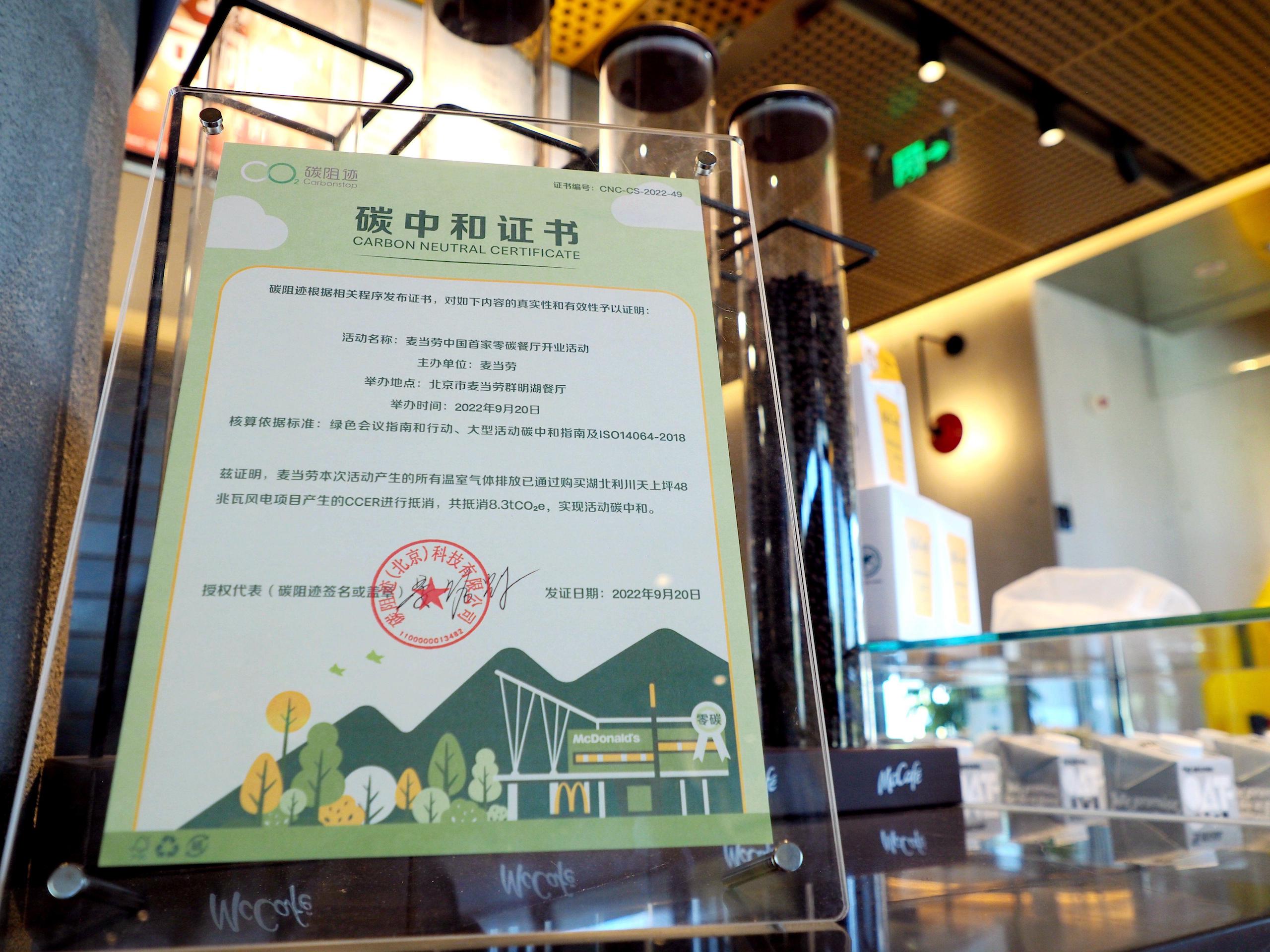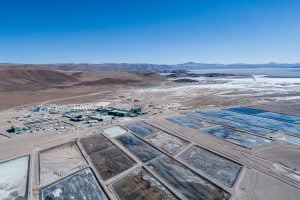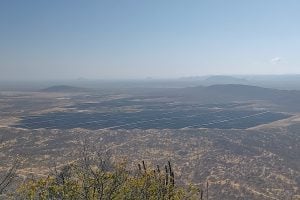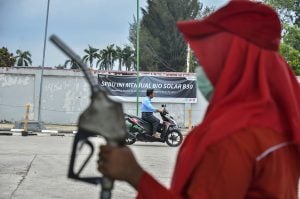As you sit in a carbon-neutral building, drinking a carbon-neutral coffee with carbon-neutral milk and munching on your carbon-neutral mooncake, you open your carbon-neutral computer and arrange the delivery of a package to a carbon-neutral locker. Then you walk to your car, powered by a carbon-neutral battery, and drive to the airport for your carbon-neutral flight to a carbon-neutral event … But are you really being carbon neutral?
“Carbon neutrality” is achieved when the CO2 released into the atmosphere by an activity is successful balanced out by an equivalent removal of CO2. If an individual, company or country can take as much CO2 out of the atmosphere as they put in, they are carbon-neutral.
The term has become a buzzword in China, with many “carbon-neutral” products following. But the label and statements about it have come under fire. Are the claims being made on such products genuine, or just greenwashing?
Other countries have been taking action: in June, Canada passed a law preventing companies from making unfounded environmental claims, including dubious ones of carbon neutrality; back in March, the EU sent an even clearer message, banning all environmental claims based on greenhouse gas offsetting.
China’s carbon-neutral products all claim that status based on offsets. Products or services have long been able to get carbon neutrality certification from environmental-testing institutions, certification providers and industry associations. But in April this year, the government banned the use of certain words, such as “verified”, in carbon certification.
This refers to a company or person purchasing “carbon credits” (also known as “offsets”) to cancel out their emissions. One credit usually corresponds to one tonne of averted CO2 emissions (because, for example, an activity was completed using renewable power rather than fossil fuels) or removed CO2 emissions (via an activity such as tree planting). Once counted and verified, these carbon credits can be traded on carbon markets.
The three major international offsetting mechanisms are the UN Clean Development Mechanism, the Joint Implementation, and the International Emissions Trading Mechanism. Independent mechanisms include the American Carbon Registry, Climate Action Reserve, and Gold Standard. There are also national and regional mechanisms, such as the China Certified Emission Reductions scheme.
On 1 October, China began to implement national general standards for product carbon-footprint accounting. This will lead to the preparation of accounting standards for various products. Carbon labels, including carbon-neutral labels, will also become more standardised.
Farewell to carbon-neutral labelling?
In China, the use of the term “verified” is restricted. In April, the certification authorities made clear that carbon-labelling schemes have to be registered. It stipulated that carbon disclosures and neutrality statements for products, services and management systems must not use terms such as “approved”, “examined” or “verified”.
Carbon neutrality labels are a subset of carbon labelling. Emissions information is presented as quantities or grades, to allow consumers to make lower-carbon choices. The US, UK, EU and Japan all have carbon-labelling schemes.
China is still exploring and testing the possibilities for carbon labelling, and there is not yet any applicable legislation in place. According to the National Energy Administration’s official newspaper, China Energy News, the country has 1,400 approved certification bodies, covering a wide range of products. For example, the carbon management solutions provider Carbonstop has an online shopping platform that lists over 300 low-carbon products, from pet care to personal care. But a lack of norms and standards means the quality of certification is uneven.
China doesn’t have a national standard for carbon-neutral product certification, so overseas standards are usually referred to. These include the International Organization for Standardization’s PAS 2060 (due to be formally superseded by ISO 14068 in 2025) and Costa Rica’s INTE B5. These set requirements for the three steps to certification: accounting for, reducing and offsetting carbon emissions.
As mentioned, unlike China, the EU is saying goodbye to carbon-neutral product statements that depend upon offsetting. The bloc enacted a new directive in March called Empowering Consumers for the Green Transition. It prohibits claims that a product or service has a neutral or positive impact on carbon emissions, if those claims are reliant on offsetting. EU member states now have two years to incorporate the directive into national law.
One Chinese expert told Dialogue Earth off the record: “A lot of companies claim to be net-zero, zero-carbon or carbon-neutral, but there are so many loopholes that the consumer gets misled. The EU directive will mean only statements based on environmental impacts during the product’s lifecycle will be permitted.”
Under the new directive, “carbon-neutral” is not the only term to be prohibited: “environmentally friendly”, “climate-friendly”, “carbon-friendly”, “carbon-positive” and other vague terms and statements will be subject to investigation and possible punishment.
Offsetting debates and greenwashing concerns
The concerns being raised about carbon neutrality boil down to doubts over carbon offsetting via carbon credits.
Although restrictions are in place – such as the requirement that a carbon credit is cancelled once it has been used for offsetting – a lack of transparency and double-counting have caused global offsetting scandals. In 2023, it was revealed that 90% of the rainforest carbon offsetting projects run by Verra (the world’s biggest certifier of carbon offsets) were worthless; the world’s biggest carbon trader, South Pole, was accused of exaggerating the outcomes of its projects that same year. Customers of those firms include big emitters such as oil and aviation firms, and well-known consumer and consultancy brands.
This has all inevitably damaged the reputation of carbon offsetting; many companies that had claimed their products or activities were carbon-neutral were accused of greenwashing. As long ago as 2007, some were already warning that offsets were nothing more than “modern-day indulgences” that would do nothing to benefit the climate.
The controversy over carbon neutrality has carried over to labelling and statements. In 2012, a UK consultancy called the Carbon Trust launched a carbon neutrality labelling scheme. In 2023, this was replaced with a carbon footprint label, alongside promises of “a greater emphasis on reduction, more ambitious requirements and more information about the claim”.
As mentioned, products and services in China also claim to be carbon-neutral with recourse to offsets. Such offsets are often purchased as China Certified Emission Reductions (CCER), which are government-certified carbon credits. The CCER scheme, which is voluntary, was suspended between 2017 and January 2024 partially due to fraudulent data and a lack of transparency. Today, China’s voluntary carbon market is overseen by the Ministry of Ecology and Environment. This stricter oversight means that – at least in theory – the data is of better quality.
There are no such rules for carbon neutrality statements. This means many of them rely on various standards for their offsets, such as those of the CCER scheme and the UN Clean Development Mechanism (CDM). April’s statement from the certification authorities in China recommends the use of international standards, national standards and industry standards. It stipulates “other emissions-reductions mechanisms, such as CCER, CDM, [Verified Carbon Standard] and [Gold Standard] must not be used only.” In other words, just buying carbon credits does not mean you can describe yourself or your product as carbon-neutral.
Will carbon neutrality certification continue?
“The EU isn’t ending carbon neutrality,” clarifies our off-the-record expert. “There’s no problem with being carbon-neutral. It’s the lack of standards and evidence that’s the problem. The EU wants to stop people labelling themselves as carbon-neutral with no basis for doing so.”
In China, carbon neutrality certification for companies and products can continue: there is no mention in the April statement of banning terms such as “certificate” or “statement”.
Ouyang Cheng, the consulting director at Carbonstop, believes carbon neutrality product labels have their own significance:
“If a product is marked as having a carbon footprint of 10g, that might not mean much to a consumer, and it will have limited help in increasing sales. However, if consumers are told that it is low-carbon or carbon-neutral, they are willing to pay for it. With positive feedback from consumers, companies will be more motivated to invest in carbon neutrality, and low-carbon transformation will have more talent, technology and financial support.”
In both China and the EU, carbon neutrality labelling and the stricter management of offset-based claims have raised uncertainty for voluntary carbon markets. Given that the carbon credits purchased to back up those claims come from voluntary markets, our off-the-record expert ponders: “EU regulations block the biggest use of carbon offsets in the voluntary emission-reduction market. Will it be a watershed in the development of the voluntary carbon market? Will it have an indirect psychological impact on China’s CCER?”
Carbon footprint accounting needs to catch up
Carbon labelling, including neutrality labels, displays the outcomes of carbon accounting in a way that is easy for consumers to understand. Regardless of the words or forms used, carbon footprint accounting remains crucial.
This is something developed nations started earlier, building authoritative databases of emissions factors and carbon-accounting standards. China, however, is just getting started. As experts have explained, the EU’s carbon levy (known as the Carbon Border Adjustment Mechanism) and sustainability requirements for products (such as for the carbon footprint of electric vehicle batteries) are two major measures that promote a trade-linked system of global carbon standards. Both require the disclosure and accounting of carbon footprints. So, a mutual recognition of standards on these processes, with the EU and other trading partners, is an essential consideration for Chinese firms working in those markets – and a current source of difficulty.
China is working to align its own carbon footprint accounting system with those overseas. That system will start to take shape in 2027, by which point carbon accounting standards for about 100 key products will be in place. By 2025, China will have rules and standards in place for calculating a product’s carbon footprint, and a database of such footprints. That will allow a single system for verification and labelling.
Experts say this standardisation of carbon neutrality and other carbon labels must happen first, because this is such a large and complex system. The hope, they add, is that focusing on labels initially will lead to success in building the rest of the system.










